Gli avvisi personalizzati e la visualizzazione dei dati consentono di identificare e prevenire rapidamente interruzioni e altri problemi di rete.
Le best practice di monitoraggio della rete sono la base per un monitoraggio efficiente e completo dell'intera infrastruttura IT.
I problemi si verificano rapidamente: Un router si guasta e presto l'intera rete inizia a risentirne. Quando si è colti di sorpresa, possono volerci ore per scoprire la fonte dell'errore. Nel peggiore dei casi, un dispositivo o un servizio IT malfunzionante può bloccare l'intera azienda. Questo può avere un impatto considerevole sulle vendite dell'azienda e danneggiarne la reputazione.
Risolvete questo problema seguendo le efficaci best practice di monitoraggio della rete riportate di seguito e semplificate il tutto utilizzando uno strumento di monitoraggio della rete collaudato come il PRTG di Paessler, che aiuta i team IT e gli amministratori di rete a risolvere rapidamente i problemi.
Affinché la rete funzioni correttamente, è fondamentale monitorare l'infrastruttura di rete, compresi i dispositivi di rete come router e switch, per garantire che siano sempre operativi. Una singola porta di switch difettosa o un cavo Ethernet rotto possono causare gravi malfunzionamenti e interruzioni.
Se un server si blocca o la connessione VPN di un dipendente che lavora da remoto si interrompe, non passa molto tempo prima che l'intera azienda ne risenta. Questo può costare caro alla vostra azienda. È quindi indispensabile monitorare l'infrastruttura di rete 24 ore su 24, 7 giorni su 7, con uno strumento di monitoraggio come PRTG.
Un traffico di dati eccessivo può rallentare la rete. Ad esempio, un flusso eccessivo di dati affatica la larghezza di banda dei router e degli switch e una grande quantità di dati ostruisce i dischi rigidi e gli altri dispositivi di archiviazione. Questi tipi di situazioni hanno un impatto notevole sulle prestazioni della rete.
Avete bisogno di uno strumento come PRTG che monitorizzi l 'utilizzo della larghezza di banda e analizzi il traffico di rete e vi tenga aggiornati in ogni momento. In questo modo è possibile intervenire rapidamente in modo proattivo nel caso in cui il traffico aumenti o un'unità di storage raggiunga la sua capacità.
Oltre alle prestazioni, la sicurezza della rete svolge un ruolo importante nella funzionalità dell'infrastruttura IT. I firewall devono essere configurati correttamente, il software antivirus deve essere sempre attivo e funzionante e gli aggiornamenti devono essere automatizzati.
Le vulnerabilità possono verificarsi quando le porte dei dispositivi firewall sono aperte quando dovrebbero essere chiuse o gli aggiornamenti automatici sono stati accidentalmente disabilitati. PRTG vi aiuta a prevenire questi problemi con un monitoraggio 24/7 della sicurezza IT.
I server sono la spina dorsale della rete aziendale. Evitate costosi tempi di inattività assicurandovi che i server di posta, i server web, i server di database, iserver virtuali e altri componenti della rete siano sempre attivi e funzionanti.
PRTG semplifica le cose tenendo costantemente sotto controllo i vostri server e le applicazioni e i servizi che vi girano sopra per garantire prestazioni ottimali. Inoltre, a differenza di altri monitor di rete, PRTG viene fornito con sensori preconfigurati per Dell, HPE, Microsoft, IBM, Apache, Exchange e altri endpoint hardware per una facile distribuzione e integrazione.
Diagnosticare i problemi di rete monitorando continuamente la salute, la disponibilità e le prestazioni della rete. Mostra il tempo di attività, l'utilizzo della larghezza di banda, i tempi di risposta, la perdita di pacchetti, la latenza, l'utilizzo della CPU e altre metriche chiave delle prestazioni in tempo reale. Visualizzate i dati di monitoraggio in chiare mappe e dashboard della topologia di rete per identificare più facilmente i problemi. Ottenete la Panoramica necessaria per risolvere i colli di bottiglia della rete e altri problemi di prestazioni.
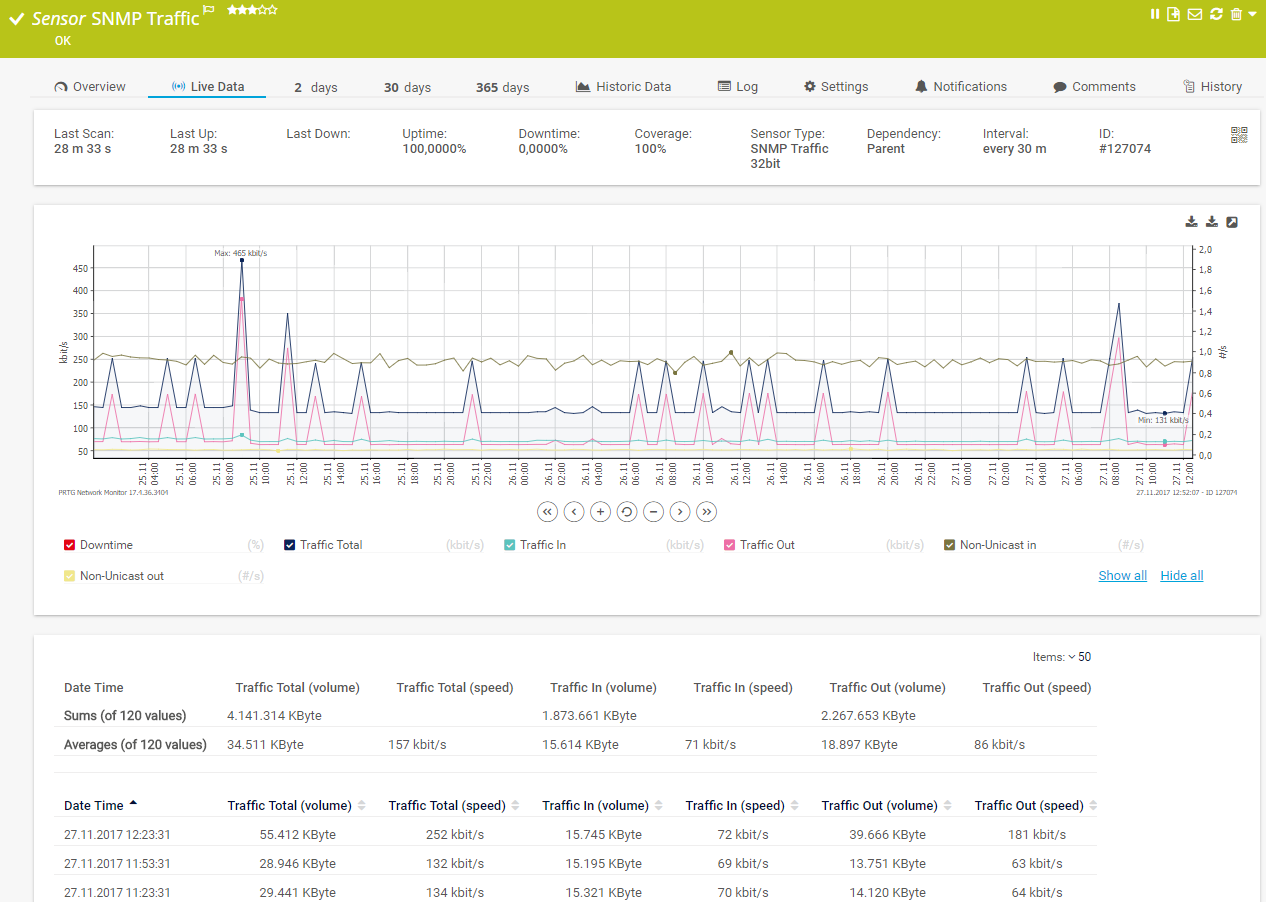
Grafico dei dati di traffico in tempo reale in PRTG
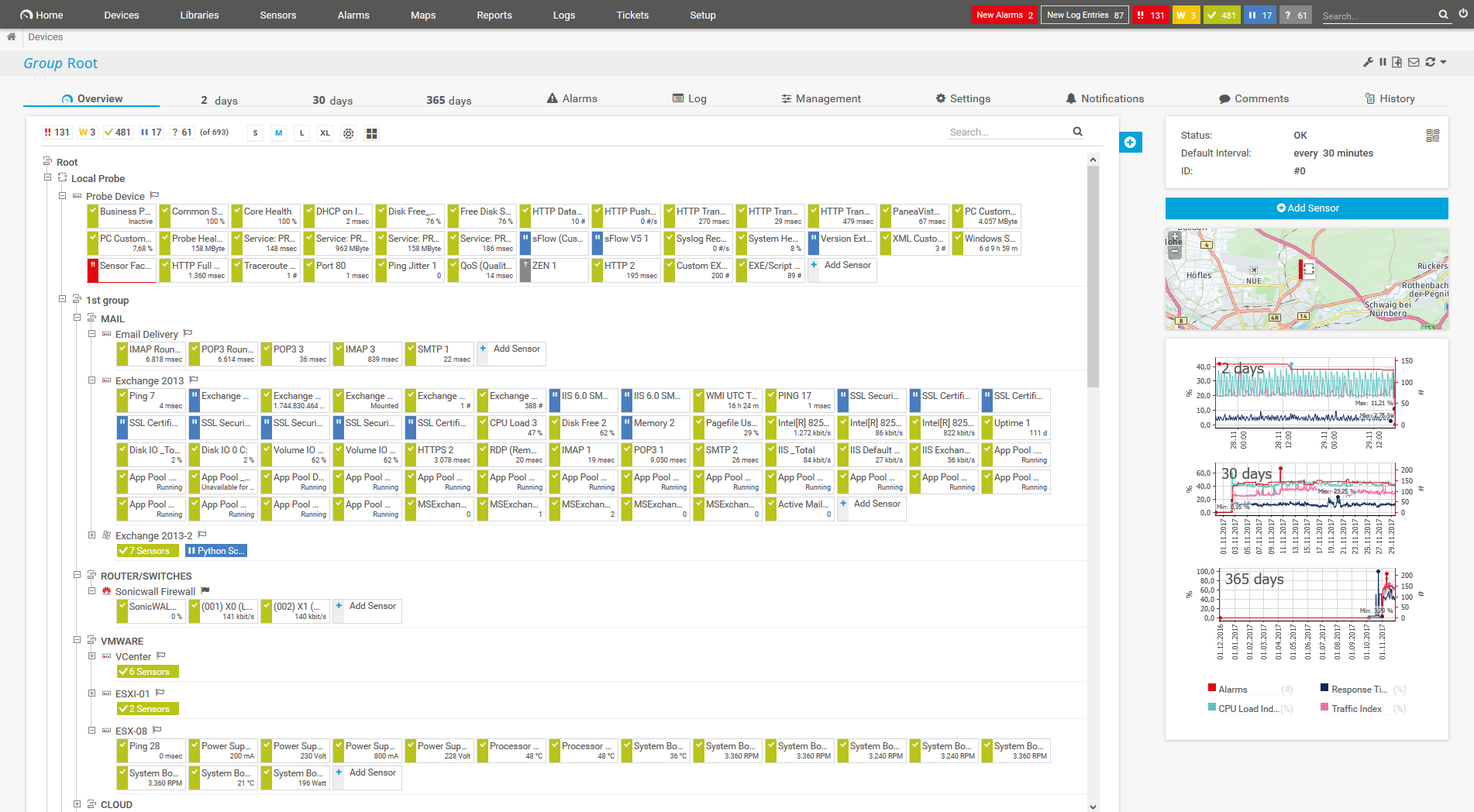
Albero dei dispositivi dell'intera configurazione di monitoraggio
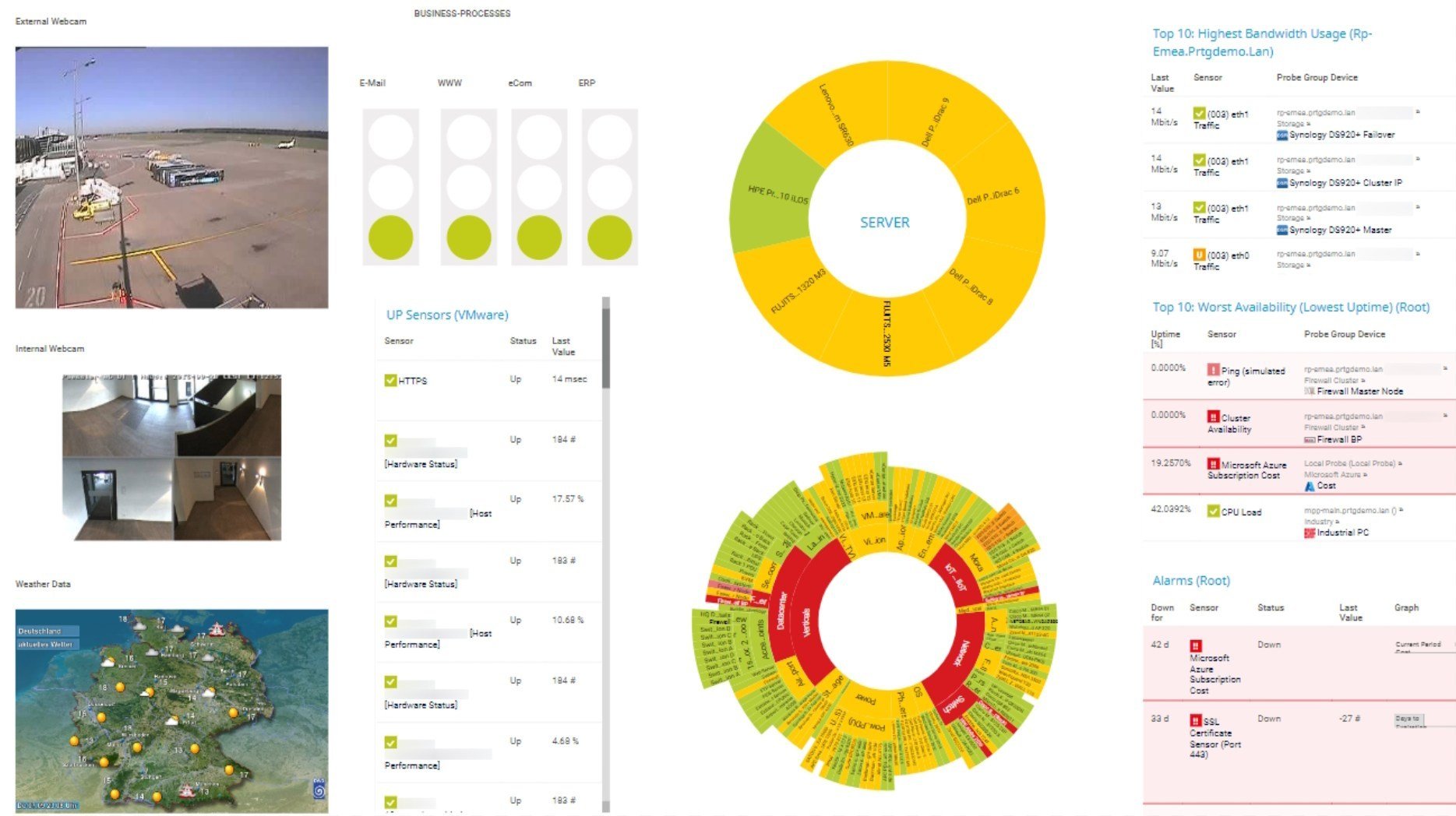
Dashboard PRTG personalizzato per tenere sotto controllo l'intera infrastruttura IT

Grafico dei dati di traffico in tempo reale in PRTG

Albero dei dispositivi dell'intera configurazione di monitoraggio
Con un software di monitoraggio della rete come PRTG, tenere sotto controllo le operazioni di rete è facile. Basta impostare le soglie di warning e di errore individuali e PRTG vi avvisa tramite SMS, e-mail, notifiche push e altri metodi non appena una soglia viene superata. In questo modo, potrete risolvere i potenziali problemi molto rapidamente, anche prima che i vostri utenti finali se ne accorgano.ng potente?
La visibilità completa della rete è un must di ogni strategia di monitoraggio. Con PRTG, è possibile creare dashboard e mappe di rete personalizzate con pochi clic utilizzando l'editor di mappe drag-and-drop. Potete anche condividere le mappe che avete costruito pubblicamente tramite schermo e impostare diritti di accesso granulari in modo che le persone vedano solo i dati che devono vedere.
Avete bisogno di una visibilità di rete ancora maggiore? Il PRTG è dotato di una grande quantità di dati storici che potete utilizzare per generare rapporti approfonditi per i vari stakeholder. Analizzate i dati sulle prestazioni e il comportamento della rete per identificare le tendenze e prendere decisioni informate sulla pianificazione dell'hardware, dello storage e della larghezza di banda, ad esempio.
PRTG è dotato di oltre 250 tipi di sensori nativi per il monitoraggio dell'intero ambiente on-premises, cloud e cloud ibrido. Dai un'occhiata ad alcuni esempi qui sotto!
Consulta il manuale di PRTG per un elenco di tutti i tipi di sensore disponibili.
Gli avvisi personalizzati e la visualizzazione dei dati consentono di identificare e prevenire rapidamente i guasti e altri problemi di rete.
Configurate PRTG in pochi minuti e utilizzatelo su quasi tutti i dispositivi mobili.
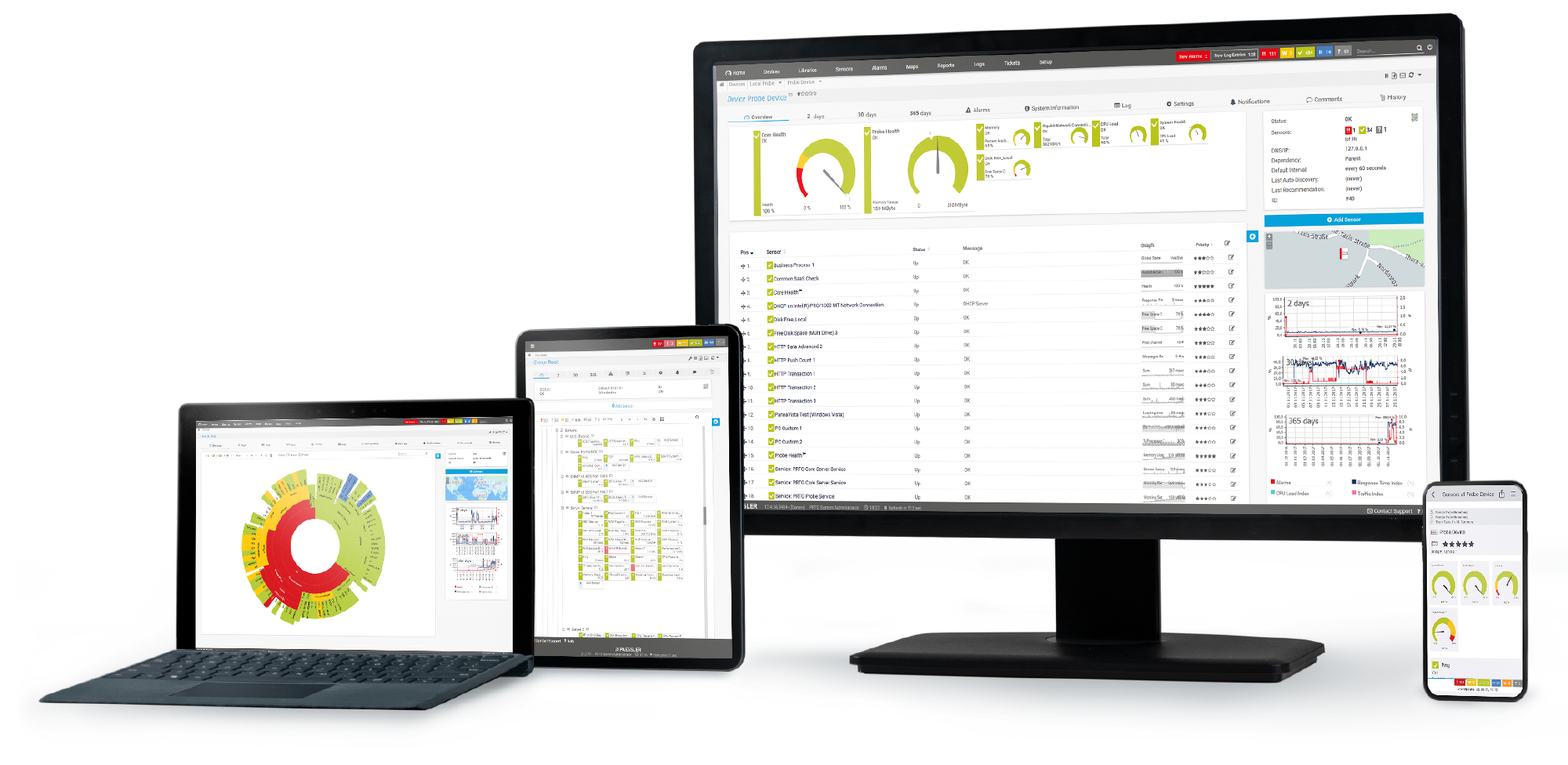
“Eccellente strumento per un monitoraggio dettagliato. Gli avvisi e le notifiche funzionano perfettamente. L'aggiunta dei dispositivi è intuitiva e la configurazione iniziale del server è molto semplice. ...acquistatelo tranquillamente se desiderate monitorare un vasto panorama di rete.”
Grazie alla collaborazione con fornitori IT innovativi, Paessler libera sinergie per creare nuovi e ulteriori vantaggi per i suoi clienti.
L'IT che funziona costituisce una base critica per il successo di un'azienda. La disponibilità e la sicurezza devono essere definite per il rispettivo scopo e monitorate attentamente, sia da parte dell'OT che dell'IT.
L'integrazione dei risultati del monitoraggio di PRTG nelle mappe di NetBrain costituisce la base per l'automazione della rete.
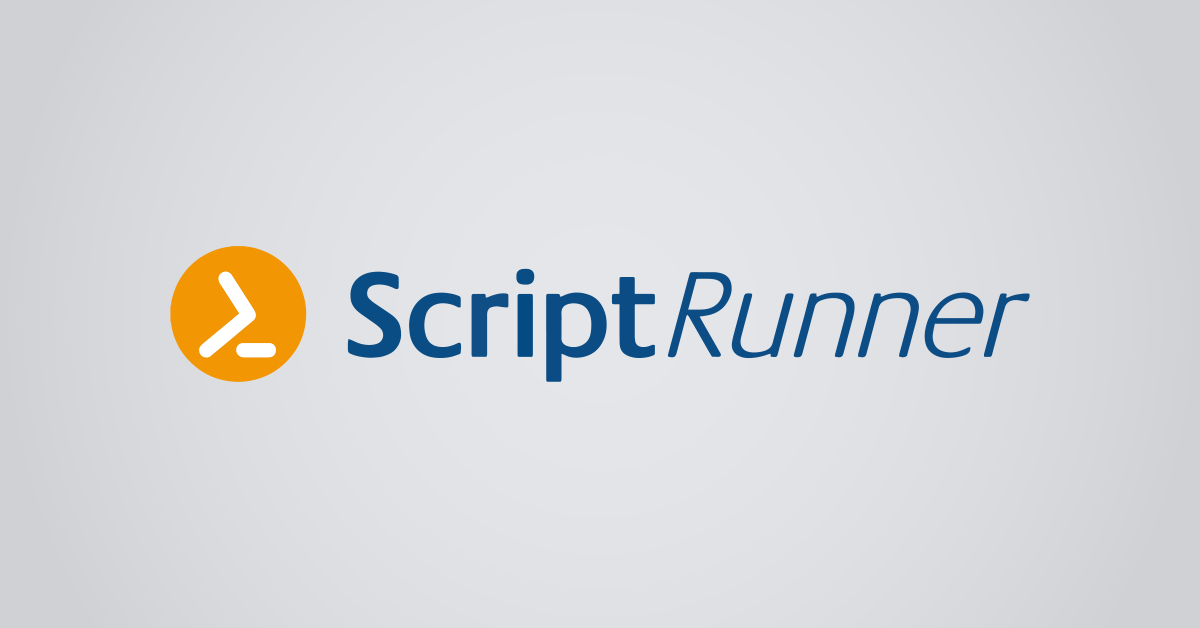
Con ScriptRunner Paessler integra una potente piattaforma di automazione degli eventi in PRTG Network Monitor.
Notifiche in tempo reale significano una risoluzione più rapida dei problemi, in modo da poter intervenire prima che si verifichino problemi più gravi.
Software di monitoraggio della rete – Versione 24.4.102.1351 (November 12th, 2024)
Disponibile il download della versione per Windows e della versione cloud-based PRTG Hosted Monitor
Inglese, tedesco, spagnolo, francese, portoghese, olandese, russo, giapponese e cinese semplificato
Dispositivi di rete, larghezza di banda, server, applicazioni, ambienti virtuali, sistemi remoti, IoT e molto altro
Scegli l'abbonamento a PRTG Network Monitor più adatto a te
Il protocollo consigliato per il monitoraggio della rete comprende in genere una combinazione di SNMP (Simple Network Management Protocol), NetFlow/IPFIX, Syslog e ICMP (Internet Control Message Protocol). Questi protocolli hanno scopi diversi e spesso vengono utilizzati insieme per un monitoraggio completo.
Il modo migliore per monitorare efficacemente la rete consiste nell'utilizzare una combinazione di strumenti, protocolli e best practice per coprire tutti gli aspetti delle prestazioni, della sicurezza e dell'affidabilità della rete. Ecco un approccio strutturato:
Il monitoraggio dell'efficacia di un sistema di rete consiste nel valutare in che misura la rete soddisfa gli obiettivi di prestazioni, affidabilità e sicurezza. Ciò può essere fatto monitorando le metriche chiave, stabilendo parametri di riferimento, analizzando le tendenze e conducendo valutazioni regolari. Ecco un approccio graduale:
Con il nostro strumento gratuito di monitoraggio della rete, otterrete:
Con l'edizione freeware del PRTG, è possibile iniziare a monitorare la rete in pochi minuti. La nostra funzione di auto-discovery rileva tutti i dispositivi all'interno di un determinato intervallo di indirizzi IPS e li incorpora automaticamente nel vostro ambiente di monitoraggio.
La licenza di abbonamento flessibile di PRTG consente di scalare facilmente in base al numero di sensori in uso. Dopo 30 giorni di prova gratuita della versione illimitata di PRTG, è ancora possibile utilizzare la versione gratuita con 100 sensori gratuiti. Esaminate i nostri prezzi
In PRTG, i “sensori” sono gli elementi base del monitoraggio. Un sensore monitora solitamente un valore misurato nella tua rete (ad esempio, il traffico di una porta switch, il carico della CPU di un server o lo spazio libero di un’unità disco). In media, occorrono circa 5-10 sensori per ogni dispositivo o un sensore per ogni porta switch.
Paessler ha condotto prove in oltre 600 dipartimenti IT in tutto il mondo per mettere a punto il suo software di monitoraggio di rete più vicino alle esigenze dei sysadmin. Il risultato è che più del 95% degli intervistati consiglierebbe PRTG – o lo ha già fatto.
Paessler PRTG è utilizzato da aziende di tutte le dimensioni. Gli amministratori di sistema adorano PRTG perché rende il loro lavoro molto più semplice.
Ampiezza di banda, server, ambienti virtuali, siti Web, servizi VoIP - PRTG tiene d'occhio la tua intera rete.
Tutti hanno esigenze di monitoraggio diverse. Ecco perché ti lasciamo provare PRTG gratuitamente. Inizia oggi stesso la tua prova.